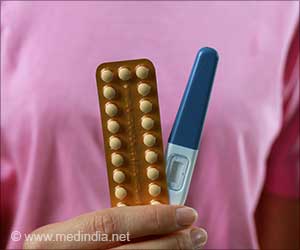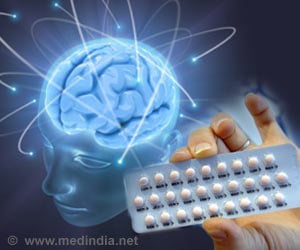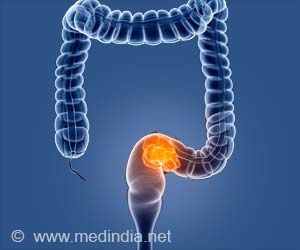A modeling study suggests hormone doses in contraceptives could safely be lowered and they could still be effective.
- The birth control pill is a daily pill that contains hormones to change the way the body works and prevent pregnancy
- Researchers recently looked at hormone levels in contraceptive devices to determine whether it is possible to reduce levels of hormones and still have the contraceptives be effective at preventing pregnancy
- The results showed that with estrogen-only contraceptives, the scientists reduced the dosage by 92%, and with progesterone-only contraceptives, they reduced the dose by 43% and still had contraceptive benefits
A recent study suggests that it is possible to reduce hormones in both estrogen-only and progesterone-only contraceptives by a significant degree and still prevent ovulation. The study was published in the journal PLOS Computational Biology (1✔ ✔Trusted Source
Toward an optimal contraception dosing strategy
Go to source).
How Does the Birth Control Pill Work?
Healthcare providers frequently recommend hormonal contraceptives to female patients who want to avoid getting pregnant. According to the Centers for Disease Control and Prevention (CDC), in the United States, 12.6% of females aged 15 to 49 years use an oral contraceptive, and 10.3% of women use long-acting reversible contraceptives (2✔ ✔Trusted SourceCurrent Contraceptive Status Among Women Aged 15-49: United States, 2015-2017
Go to source).
Hormonal contraceptive devices work by using synthetic hormones, such as estrogen and progesterone, to prevent pregnancy.
They can work in multiple ways, including stopping ovulation or causing the uterine lining to thin so that an implanted egg cannot attach.
A few types of hormonal contraceptives include pills, which can be a combination pill or progestin-only, the arm implant, the contraceptive patch, and intrauterine devices (IUDs).
In addition to prescribing contraceptives to prevent pregnancy, sometimes doctors will prescribe them to help those with polycystic ovary syndrome (PCOS) to reduce the size of cysts and thereby reduce pain, or in the treatment of endometriosis, to help control pain and excessive bleeding.
Hormonal contraceptives can have some side effects like nausea, headaches, abdominal cramping, hypertension, blood clots, and stroke.
The researchers wanted to analyze whether lower hormone doses could still be effective in preventing pregnancy.
They reduced the number of hormones in the contraceptives and theorized that it might be possible to adjust the timing of different dosages to receive maximum benefit.
“The objective is to identify strategies to understand when and how much estrogen and/ or progesterone to administer to obtain a contraceptive state,” write the authors.
The scientists studied data from 23 female participants aged 20 to 34 years. According to the researchers, the participants had regular menstrual cycles that lasted from 25 to 35 days.
They ran their data on two models: the pituitary model and the ovarian model.
The pituitary gland is part of the endocrine system, which regulates hormones that impact ovulation. With the pituitary model, they analyzed the timing of the release of ovulation hormones as well as the hormone levels.
With the ovarian computer model, the scientists looked at how the ovaries responded to the hormones released.
Additionally, the researchers ran models to see how different levels of estrogen and progesterone affected the menstrual cycle.
Lowering the Dose of Hormones in Oral Contraceptives Can Still Prevent Pregnancy
The computer models showed that it is possible to make adjustments to the hormone dosage and prevent ovulation.The models show that not only could the hormones be reduced, but the researchers also found that it is possible to focus on adjusting the dose during certain parts of the cycle and still have the contraceptives be effective.
With estrogen-only contraceptives, the scientists reduced the dosage by 92% and retained effectiveness. In progesterone-only contraceptives, they reduced the dose by 43% and still had contraceptive benefits.
As far as the timing of the hormone delivery goes, the authors note “that it is most effective to deliver the estrogen contraceptive in the mid-follicular phase.”
Authors say that it was surprising that theoretically, their mathematical model — with the simplifying assumptions — showed that as low as 10% of the total exogenous estrogen dose in constant administration could achieve contraception as long as this dosage is perfectly timed.
Lower doses reduce risks of adverse side effects such as thrombosis and myocardial infarction associated with large doses.
The researchers also explained that the current mathematical model does not capture all factors in contraception since the reproductive function in women is a very complex multiscale dynamical system. As more data comes out it can be refined to address other contraception issues.
Limitations and Potential Implications of a Mathematical Model for Contraceptives
Although the study's findings indicate that it is possible to change the hormone dose in contraceptives while keeping them effective, the study has not yet reached the stage where it may be applied in clinical settings.It is important to realize that the study finding is theoretical and was not tested in humans.
The study is a mathematical model that needs to undergo testing in an animal model and in humans to be able to test its safety and efficacy.
However, there is potential in the study.
References:
- Toward an optimal contraception dosing strategy - (https://journals.plos.org/ploscompbiol/article?id=10.1371/journal.pcbi.1010073)
- Current Contraceptive Status Among Women Aged 15–49: United States, 2015–2017 - (https://www.cdc.gov/nchs/products/databriefs/db327.htm)
Source-Medindia















